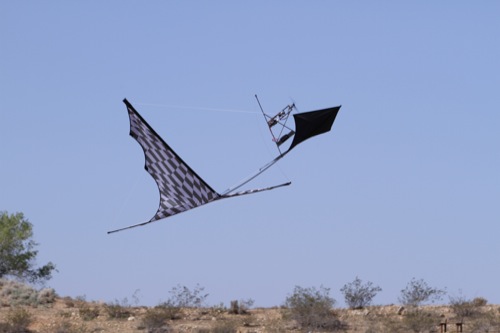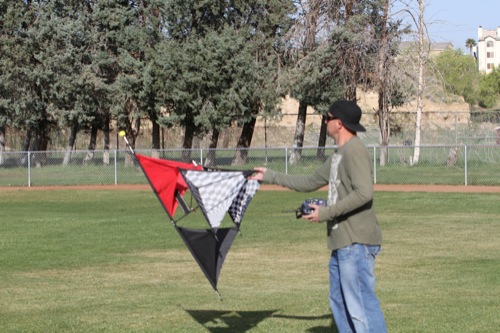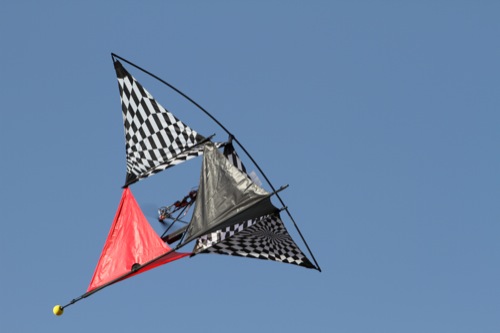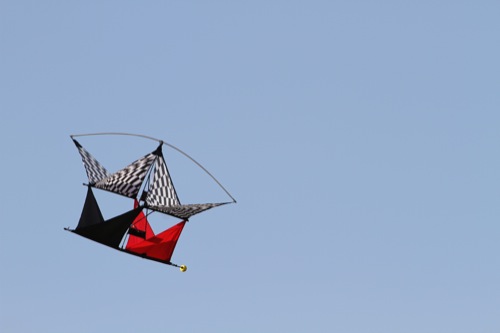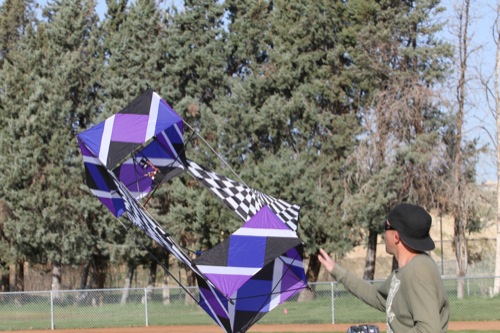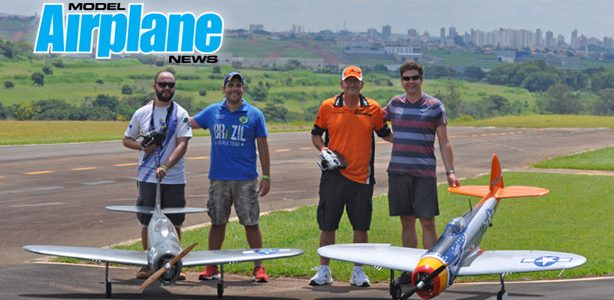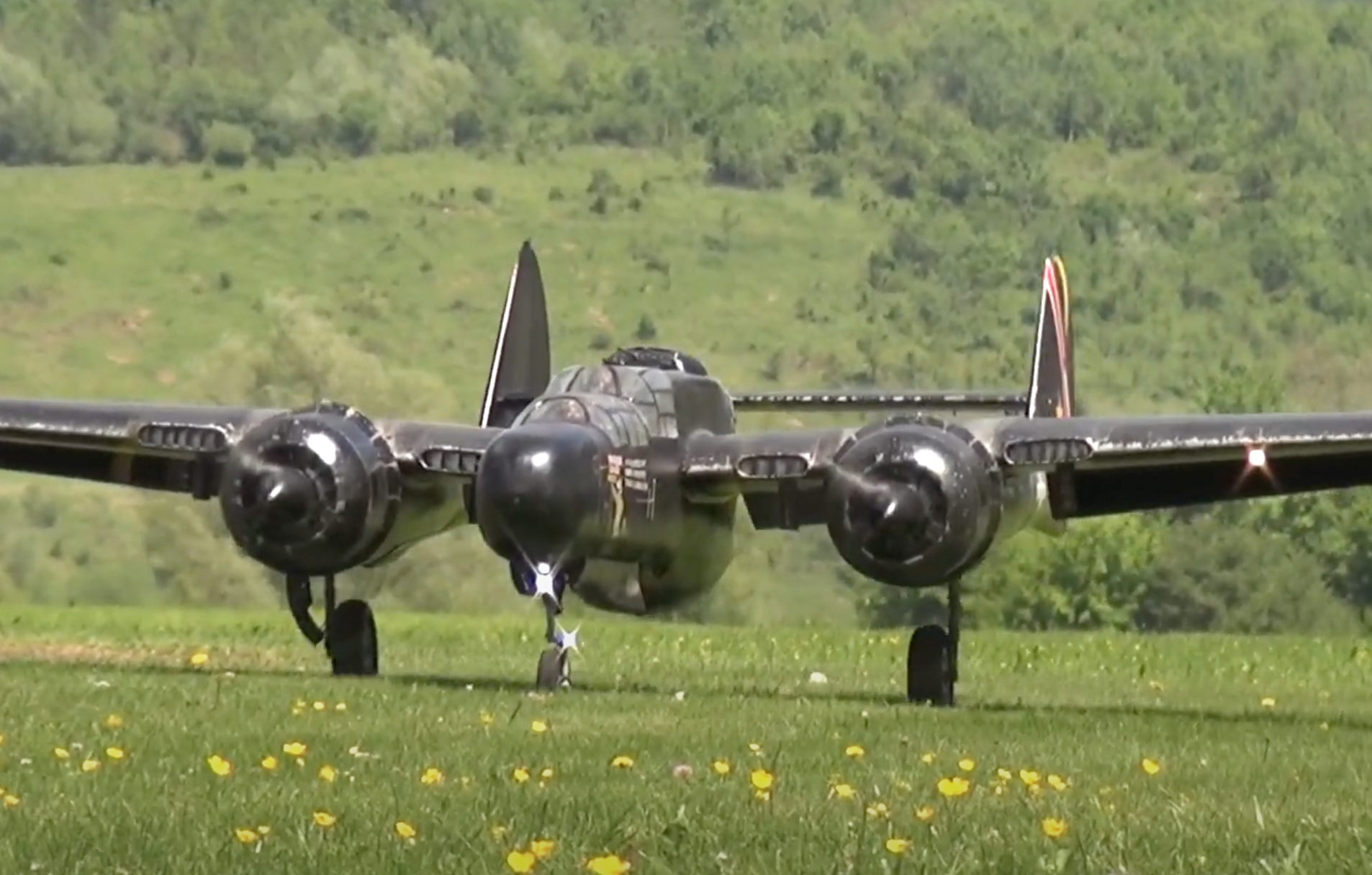Flying Vector Kites is a remote-control experience like no other
Author: Mike Gantt
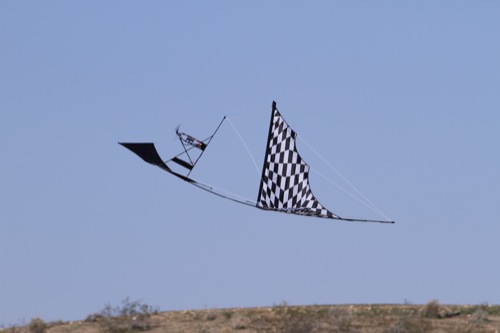
(See more photos below)
“Flying things come in all shapes and sizes,” and as a model aircraft reviewer, I can tell you that statement is beyond true. From giant-scale to micro planes and helicopters, birds (or ornithopters), lawn mowers, cars and boats, all have been seen flying in the air. If you can dream it up, someone will make it fly. How about an RC kite? Kiting is an interesting concept in itself, and when it is windy outside, many folks will break out their stunt kite or a simple plastic and wood getup, the one with a favorite cartoon character bought at the toy store. If you want to fly something unique at your local park other than a tiny/micro model airplane, or you do not want to go through the routine of transporting/loading/unloading/setting up your AMA field-size model, there is a new alternative from Premier RC called Vector Kites. These super cool-looking, radio-controlled flying kites feature a power system that uses the propeller’s direction to maneuver. This vector-thrust control system is ideal, as these kites (like most) have no moving control surfaces. High-quality carbon-fiber tubing is used throughout, and 3/4-ounce Ripstop nylon covers these frames in very easy-to-see color schemes. The three designs sent for review are the V-Wing Box, the Canard and the Pyramid Racer, all of which are truly unique-looking and appear well sized. The way that these kites are constructed makes them extremely resilient, and a beginner could easily build and fly them.
Unique Features
Transporting the Vector Kites is a cinch owing to the fact that they all arrive inside zip-up carrying cases. These are more than convenient and small enough to fit within any vehicle. Once you unzip one of these well-made cases, you will find a short instruction guide, which outlines that particular kite’s assembly process. Helpful illustrations and text provide everything you’ll need to put these flying models together. Very little work is required to get any one of them in the air, and “building” any one merely takes a few minutes. You will only need to hook some of the rigging string up to and from various points and insert carbon tubes into pre-sewn pockets. Install the company’s brushless-powered pod unit into its specified location, plug in the battery, and you are ready to fly. And when you buy the RTF (ready to fly) kit, in addition to the power pod/motor/ESC, you also get a 2.4GHz transmitter, receiver and 3-cell LiPo battery pack. An extra prop and a LiPo battery charger are added as is another well-made carrying case for the aforementioned items.
The power system is truly unique; it is made specifically to fit any and all of the kites via special mounts located on their frames. This power system utilizes vector-thrust maneuvering and delivers all of the control and power needed for flight. There is no string connecting you and the model, and since there are no control surfaces, the two included servos actuate the motor/prop in both the yaw and pitch axis, providing positive control. The included 2.4GHz radio is lightweight and easy to use and performed very well. The included mating micro receiver did an outstanding job, and I never had any signal-related issues even when I flew farther away from myself. I should add that you can buy the kites without radio gear if you prefer; in fact, you can purchase the kites by themselves, access plenty of parts and buy extra power units. Chances are that you will have yours for a while, as they are durable, to say the least. They are light and carry little energy, so a rough landing does not immediately mean “out of service.” This was tested during the first few flights! That said, if you have never flown RC aircraft, I recommend getting help from a proficient pilot, which will ensure successful flying from the beginning.
Conclusion
With the Vector Powered Kites you get something completely inimitable to look at, and the experience of flying them is just as unmatched. They are guaranteed to bring smiles and can fly almost anywhere. Add to that a super resiliency aspect, and you have a really cool and complete package. Not only can the kites go anywhere, but also their transport-to-assembly time is minimal. I was able to build the Pyramid Racer in less than a minute, the V-Wing Box in a few minutes, and the Canard in just about 10 minutes.
IN THE AIR
These three different “aircraft” all do different things well. All are tons of fun and can fly from any surface. Typically, you will hand-launch the kite, and a light toss followed with some power applied will have it up and flying. The Canard can rise off of the ground; a video on the PremierRC website shows that and more amazing stuff. The kites do best in windless conditions, as they are very light and under vector thrust power without the aid of moving control surfaces. It took me a second to get used to the way that vector thrust works: I would almost say it is an elaboration on the combination of airplane and helicopter. There is only forward thrust, yet the multi-axis movements provide more than ample controllability for smooth launches, flights and landings. When your flight comes to an end, you only need to manage the power and guide it on home. After a couple of tries, I was able to set them down at my feet.
General Flight Performance
Stability: I thought the V-Wing Box exhibited the most stability of the bunch. It was smooth and solid throughout its flight. The Canard would be a close second, as it just cruises around and requires very little to keep it where it needs to be. The Pyramid Racer is by no means unstable; it’s just the most maneuverable and has the aerobatic-style airframe of the three.
Tracking: All three kites track like, well, kites. Small gusts of wind will affect them but not make them unmanageable. The Pyramid Racer gets the highest marks as it penetrates the best. The V-Wing Box does great for an RC box design, and the Canard goes where pointed with minimal corrections required to keep it on track.
Aerobatics: The Pyramid Racer will do loops within itself, spins and many turning- type maneuvers, and when you get the hang of them, you’ll be doing them on the deck. The Canard did do a loop for me without hesitation, and the V-Wing Box will do a few fun moves.
Glide & stall performance: Try to always keep a small amount of power managed, as these Vector Kites will float for quite a while; cut power, and you will lose your directional control. I learned this with a fairly rough landing, and I don’t recommend trying it out. There was no damage, but the mishap is easily avoidable.
Pilot Debriefing
More than fun indoors and out, the Vector Kites are truly unique and will surely gain interest where you fly. This trio is ideal and gives the pilot a variety of airframes using a single power setup. If you had more than one power setup, you and a friend could bounce into each other or play cat and mouse!
SPECIFICATIONS
Name: Vector Kites
Distributor: Premier RC; premierrc.com
Type: Vector thrust kite
Length: V-Wing Box 62.5 in., Canard 99.5 in., Pyramid Racer 54.5 in.
Wingspan: V-Wing Box 55 in., C
anard 90 in., Pyramid Racer 53 in.
Height: V-Wing Box 28 in., Canard 30 in., Pyramid Racer 28 in.
Weight: V-Wing Box 27.2 oz., Canard 16.8 oz., Pyramid Racer 19.2 oz.
Motor req’d: 1-oz.-class brushless outrunner
Radio req’d: 3+ channel with 2 servos
Price: $399/$429 RTF, $359/$389 ARF (no transmitter/receiver)
Highlights
+Coolness factor is over the top
+Extremely durable
+Incredible fun
+Beginner friendly
Gear Used
Radio: Included 2.4 GHz transmitter, 2.4GHz micro receiver, (2) 7520 MG servos
Motor: Included V780 brushless outrunner and 20A ESC
Battery: 3 cell 1050mAh LiPo (included)
Prop: GWS 8040 DD (2 included) (gwsprops.com)
Comparing Kites
There are some differences between flying a string kite and one that is remote controlled. Let’s take a look at a few of them:
String Kite RC Kite
-No wind, no flying -No wind, awesome flying!
-The more wind the better -Very light winds are OK
-Put it up, and it stays there, -Fly it wherever you want; high,
in one place usually low, far or near
-Fly it for hours nonstop until -Fly it for a few minutes and add a
you’re done fresh battery pack
-Can get caught in power lines, -Can fly around obstacles and
trees, etc. between them
-You can do it one-handed -Two hands required for safe control
-Can’t be flown indoors -Can be flown indoors from a chair
There are certainly advantages to both types of kiting, and I’m sure you’ll agree that the Vector Kites can hold their own.

